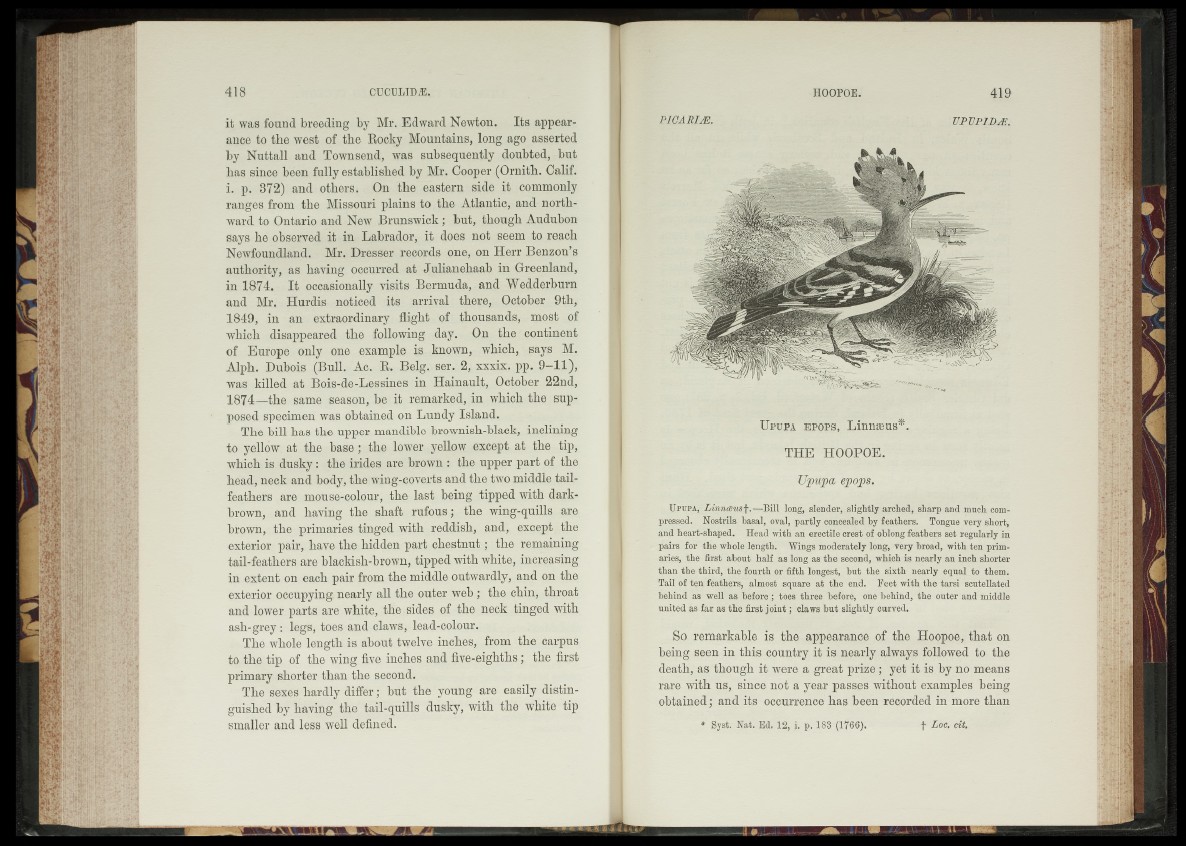
it was found breeding by Mr. Edward Newton. Its appearance
to the west of the Rocky Mountains, long ago asserted
by Nuttall and Townsend, was subsequently doubted, but
has since been fully established by Mr. Cooper (Ornith. Calif,
i. p. 872) and others. On the eastern side it commonly
ranges from the Missouri plains to the Atlantic, and northward
to Ontario and New Brunswick; but, though Audubon
says he observed it in Labrador, it does not seem to reach
Newfoundland. Mr. Dresser records one, on Herr Benzon’s
authority, as having occurred at Julianehaab in Greenland,
in 1874. It occasionally visits Bermuda, and Wedderburn
and Mr. Hurdis noticed its arrival there, October 9th,
1849, in an extraordinary flight of thousands, most of
which disappeared the following day. On the continent
of Europe only one example is known, which, says M.
Alph. Dubois (Bull. Ac. R. Belg. ser. 2, xxxix. pp. 9-11),
was killed at Bois-de-Lessines in Hainault, October 22nd,
1874—the same season, be it remarked, in which the supposed
specimen was obtained on Lundy Island.
The bill has the upper mandible brownish-black, inclining
to yellow at the base; the lower yellow except at the tip,
which is dusky: the irides are brown : the upper part of the
head, neck and body, the wing-coverts and the two middle tail-
feathers are mouse-colour, the last being tipped with dark-
brown, and having the shaft rufous; the wing-quills are
brown, the primaries tinged with reddish, and, except the
exterior pair, have the hidden part chestnut; the remaining
tail-feathers are blackish-brown, tipped with white, increasing
in extent on each pair from the middle outwardly, and on the
exterior occupying nearly all the outer web ; the chin, throat
and lower parts are white, the sides of the neck tinged with
ash-grey: legs, toes and claws, lead-colour.
The whole length is about twelve inches, from the carpus
to the tip of the wing five inches and five-eighths; the first
primary shorter than the second.
The sexes hardly differ; but the young are easily distinguished
by having the tail-quills dusky, with the white tip
smaller and less well defined.
PIOARISE. UPUPLDjE.
Upupa e p o p s , Linnaeus*.
THE HOOPOE.
Upupa epops.
Upupa, Linnceus\.—Bill long, slender, slightly arched, sharp and much compressed.
Nostrils basal, oval, partly concealed by feathers. Tongue very short,
and heart-shaped. Head with an erectile crest of oblong feathers set regularly in
pairs for the whole length. Wings moderately long, very broad, with ten primaries,
the first about half as long as the second, which is nearly an inch shorter
than the third, the fourth or fifth longest, but the sixth nearly equal to them.
Tail of ten feathers, almost square at the end. Feet with the tarsi scutellated
behind as well as before; toes three before, one behind, the outer and middle
united as far as the first jo in t; claws but slightly curved.
So remarkable is the appearance of the Hoopoe, that on
being seen in this country it is nearly always followed to the
death, as though it were a great prize; yet it is by no means
rare with us, since not a year passes without examples being
obtained; and its occurrence has been recorded in more than